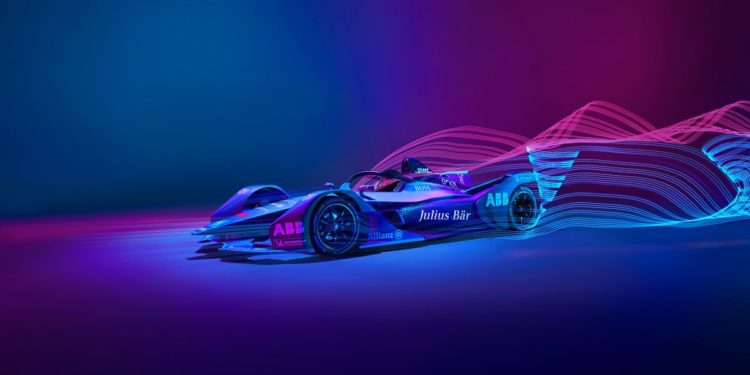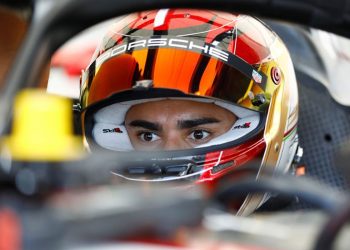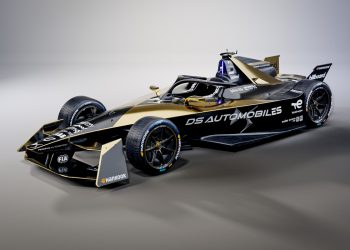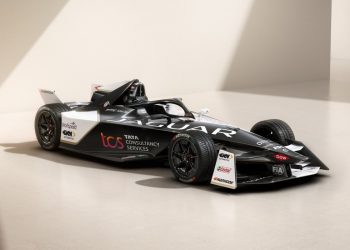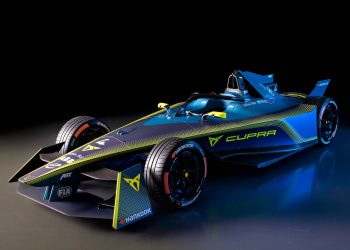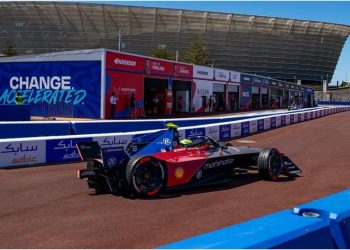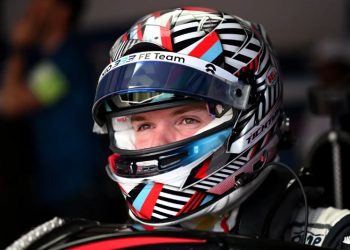The development of electric cars, which each year gains more space in the world automobile market, has an important ally: Formula E, a category that was born in 2014 and which is contested exclusively by monopoles of electric propulsion always in urban circuits.
As in Formula 1 in the past, Formula E is a kind of laboratory for new experiments that, in the short term, could be used in cars.
Automakers are on the lookout for this fertile ground of possibility. Brands such as Nissan, Porsche, Jaguar, Mercedes, Audi, BMW and Mahindra maintain teams and invest in competition to take advantage of innovative technologies that can improve electric vehicles.

Image: fiaformulae.com
In certain cases, the experiments are part of a two-way street. Manufacturers adopt, in Formula E, certain ideas that they already used in cars, such as the energy recovery system during braking.
“Approximately 90% of braking energy is recovered”, highlights Leandro Rodrigues Sabes, Porsche product and price manager in a statement reviewed by the “Mobility” portal.
The idea is that, applied under more severe conditions on the slopes, the technical solutions will become more evolved for later use in models that will reach the consumer.
Related content: Netherlands dreams of having a Formula E Eprix
One of the greatest achievements of Formula E, in seven seasons of history, concerns energy storage. Previously, drivers had to use two cars in each race, due to poor battery life. The race had a scheduled change: when the load was already at its limit, the drivers took the wheel of another car to continue the race.
Today, the average of 100 kilometers of each stage covered in 45 minutes is completed with the same car. “Batteries retain more energy, without adding weight or taking up more space in the car,” explains Humberto Gómez, Nissan’s marketing director.
Batteries: less weight, more efficiency
“A smaller size with better efficiency is the ideal equation for us to adopt in the Nissan Ariya, Nissan’s high-performance electric SUV,” he adds.
In fact, a major challenge is balancing the “increased battery storage capacity versus weight” ratio.
An excessively heavy battery is synonymous with loss of efficiency.
“There are four or five major battery manufacturers worldwide. When they reach that commitment, scale will increase and costs will fall,”said Wilson de Morais, mobility product manager at ABB, a Swiss technology and electrification company that supplies chargers for Formula E.
The Formula E car’s 20 kWh battery, called Gen2 (second generation), has been replaced by the 54 kWh, 900-volt battery, which delivers up to 250 kW, equivalent to 335 hp. Feedback takes place in ultra-fast 175 kW and 350 kW chargers, which are much quicker to leave the battery fully charged.
Tires with resistant material
There is no use for the vehicle to spill a lot of power without having the control provided by the tires. “Like electric road cars, Formula E cars are characterized by immediate torque, which makes the car start when the driver steps on the accelerator. This dynamic behavior demands more from the tires,” reveals Humberto Gómez.
In addition, the battery installed in the floor of the car leaves the center of gravity very low, putting more pressure on the sidewalls of the tires. “These requirements are causing tire manufacturers to study stronger raw materials, which can be transferred to cars,” says ABB’s Morais.

Image: fiaformulae.com
For him, the instantaneous maximum torque can lead to the improvement of another important element: the seats. When the race car accelerates rapidly, the driver’s body tends to stick to the back of the seat. In this way, the more ergonomic it is, the greater the comfort and feeling of well-being on board.
It is no coincidence that it is only carried out in urban circuits to associate the image of the electric car with urban mobility, Formula E is also a vast field of studies to increase the safety of cars.
The encapsulated battery under the cab is well protected to avoid the risk of combustion in the event of a collision. In cars, it “hides” in the ground, just as well preserved.
Read also: Formula E: Is the Rome Eprix in doubt because of COVID-19?
According to Leandro Sabes, at Porsche there is a close interaction between motorsport engineering and trams, which ended up resulting in triangulation.
The Porsche 919 Hybrid prototype at Le Mans brought some good prospects to the Taycan, the brand’s 100% electric sports car, which in turn carried them over to the 99X Formula E car.
He highlights the importance of thermal management in electrical models. “All it takes less in an electric vehicle is overheating. For this reason, the cooling of the battery and the internal systems to control the temperature is essential, in Formula E cars, to give us subsidies in the application in the street car,” he concludes.
Source: Mobility Brasil
Written by I Jhonattan González





